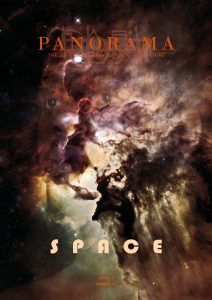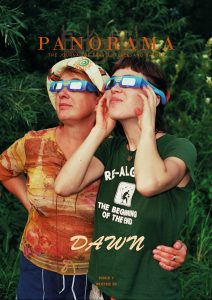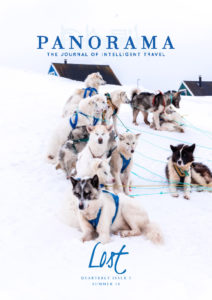“The limits of my language are the limits of my world.”
— Ludwig Wittgenstein
Ord/ Words
In my first days as an expat, there was only one person in the country of Denmark, on the entire continent of Europe, who knew my name. Who knew me. That was my wife Jess, whom I had followed to this dot in the north of Europe when she was offered a job at the University of Copenhagen. To everyone else I was a stranger. A fleeting part of the Danish landscape.
Hej. Tak. Selv tak. Hav en god dag. I lige måde. Hvad hedder du? Hvor kommer du fra? Hvor længe har du boet her? Hvad vil du gerne? Kan du taler Dansk? Er du klar? Hvad siger du? Rød grød med flød.
Those first days, a tsunami of sounds, letters, and expectations towered over me. The closer it got, the louder and more confusing it became. Dipthongs, invisible sounds, unfamiliar letters. They gathered and grew until they were a great, dripping wall of unknown words. I cowered beneath the power of unrecognized language that rolled toward me. I had no idea where one word stopped and the next one began. Running from them was impossible. I was on the main island of Denmark, surrounded by everywhere-sea. Where were my New England mountains? Where were my twenty-six letters, all laid out in neat, recognizable patterns? The ones I needed to make my life. To speak, to write, to work. They were all there, but they had rearranged themselves, turned against me. Like drops of water, they had aggregated, gathering mass and energy. And as if twenty-six weren’t enough, three new characters joined the movement—the å, the ø, and the æ were a force unto themselves. Every one of the now twenty-nine characters churned and gathered, pulsed themselves into a roar that left me mute. The tsunami of words engulfed me.
It’s true that most Danes speak English better than Americans do, and that there is almost nowhere in Copenhagen where it’s not possible to speak English. But speaking English was a verbal surrender to my new status as an “Outsider.” I became silent in two languages.
The first days were the worst. On the days I left our apartment, I walked through the streets of Copenhagen with my head down to deflect the barrage of spoken words that flew about the city. But written words echoed all around me too. Menus, websites, newspapers, storefronts, road names, grocery store products. The list grew with every step through the city, and the urban omnipresence of the written word crushed down on me. Even a trip to the grocery store plunged me headlong into an abstract painting of unfamiliar words on unfamiliar packaging. It took at least an hour to find the ten or fifteen things I needed, and then I would wait, butterflies in my stomach, for my turn in the checkout line. I could see the windows, the door, the exit. I sensed the promise of relief, but first had to face the onslaught of muddled pleasantries, knowing all I could say with confidence was “tak”. “Thank you”. Finally, back out on the street where I could disappear again, I hurried home only to arrive at our apartment and realize I’d picked up cumin instead of cinnamon. Or a pig neck instead of a tenderloin.
Tid/ Time
The twenty-four-hour clock tick-tick-ticked, mocking my American “AM” and “PM” with its logic. Understanding the question “Hvad klokken er det?” was hard enough. Being able to figure out the answer to what time it was, was even harder. Beyond the words of time, time itself created its own language that had to be translated, expressed, pronounced. Expressing time incorrectly was one more check in the “Outsider” column. Expressing time in the Danish way, however, was to be a part of the Danish world. Sometimes I whispered my “regular American” time under my breath. AM and PM became my secret civil disobedience.
I didn’t just struggle to translate time in my mind and in my speech. I struggled to translate it in my body and heart as well. There was the jet lag when I first arrived, but that was expected. What I didn’t see coming was my obsession with time. I was aware at every moment that I was six hours ahead of “home” in Massachusetts. When I looked at the clock, I registered two times, two places. It wasn’t just 21:00. It was also 3:00 pm back home. I imprisoned myself by attempting to live my life in two present-times, constantly subtracting six hours to keep the thread that ran from me to my old life from snapping. Images flashed into my mind at all hours, forbidding sleep—snapshots showing where my friends were and what they might be doing at that very moment. I would lie awake at four in the morning thinking “It’s 10:00 pm back home. My friends are still up. I must be missing out.” I could only sleep when I imagined they were too. The thread tying me to home grew taut; and time had become a language of partings spoken in seconds, minutes, and hours.
Hjem/ Home
Our apartment in Copenhagen was furnished. When I arrived, I didn’t recognize the couch, the bed, the chairs, the table. They were all borrowed, temporary, on loan from a landlord I had never seen. They had been sat on, slept in, eaten at by a string of wanderers who had left them behind for the next place they would call home. My own plump couch had been sold on Craigslist before I became an expat, and it was comforting someone else in Massachusetts. Our old familiar bed was resting in a friend’s condo near Boston. Now I shared my living space with a slim, Danish design sofa and with a bed whose mattress overshot its frame on all sides and whose thin slats shifted and smacked to the hardwood floor beneath me at least twice per week.
Home is the deep breath between words. It is the release of the “h”, the sigh of the “o”, the certainty of the “m”, the silence of the “e”. I was not home. Not yet. I was a resident with a tourist’s map, and on it, the streets of Copenhagen were splayed out in two-dimensional triangles, rectangles, and squares. Jumbles of letters resembled street names, place names, points of interest. Looking at the map unnerved me, as did the language of sounds that stalked me. I struggled to find my own street camouflaged in the patches and patterns of place names. The letters of Hildursgade crouched next to each other, waiting to pounce.
But this time I fought back. I remembered that I know the language of maps; I could translate the green spaces into parks. And the blue splotches into water. The colours of the map gave me a starting point. I finally found my street, put a big red “X” where my apartment was, then dared to go outside.
If you are fluent in your language of home, then you are in the place you know, the place you can navigate back to, the place that makes sense. It’s the place you understand so well, it’s settled in your bones.
Natur/ Nature
Whether I was navigating wide pedestrian shopping districts or inch-worming in and out of quaint European alleyways, I walked in fear of hearing words I didn’t understand being directed at me. In Denmark though, it’s possible to cross the city along a chain of parks, gardens and lakes, each green and blue jewel linked by a simple street-crossing or a few steps through a plaza or torv (square). The first time I saw the five rectangles of city lakes, my body slowed. I raised my head and breathed whole lung-fulls of air. I veered off the street and walked along the dirt paths that outlined each lake, melting into a world of natural sounds. Leaves rustled on the branches above. Birds chattered and sang; it didn’t matter that I wasn’t sure which species they were or why they were calling. I heard the flutter and flap of their wings as those same birds lifted into flight. And the splash and ripple as they landed on water and glided to a float, like the sound of a canoe as it skims over a pond at dawn. Nature cradled me in her arms, and the city started to change.
My daily walks turned to the parts of the city where nature sat. My favourite spot was a trail that leads from the field behind the Hirschsprung Art Museum and squeezes through a narrow patch of trees. I entered the tiny woods, enfolded by needle-green and bark-brown. My footsteps muffled, and I wound my way to a bench beside a cedar tree. Half a kilometre away, bikes squeaked to their stops on the cykelsti (bike lanes), buses gulped and burped, people called to their kids and friends, the metro rumbled beneath the streets. It all disappeared when I sat in the woods, in this place where I didn’t need vocabulary to understand. Here was a place I knew and could begin to call home.
Fællesskab/ Community
Several months after I moved to Denmark, and after I had gathered a few tidbits of courage, I started taking Danish language classes. I had no job, so I spent fifteen hours a week in class, another five to ten hours doing homework. Learning Danish became a project, and within two years I had advanced through four levels. In the first year, I was still nervous about using my new language skills except in the simplest of interactions, like ordering a hot chocolate without whipped cream, or reserving a table at a neighborhood restaurant. I could barrel through an entire food shopping list and exchange pleasantries at the grocery store in under an hour. The tight grip of nerves loosened its hold on me.
I collected the nouns, verbs, adjectives, and adverbs that dripped down onto me now, and I used them to water a growing garden of language. At last, I had found my voice in Denmark, and a whole new world bloomed in front of me. I decided to become a bigger part of the community. I no longer wanted to escape. I sought belonging. So I gave myself to Denmark in the best way I knew how – by sharing my passion for nature.
I searched for volunteer opportunities, and I found my place in a tree stump. The Tree Stump. Træstubben. A few blocks from my apartment, a community garden and environmental workshop and education centre radiates from the gritty neighbourhood centre. Træstubben was completed as part of a neighbourhood improvement project, and its basic structural foundation is the remains of a former public toilet house. It sits on the edge of the “Red Light District” in an area that used to be called “Hash Park”. It was a hotspot for drugs and illicit activities, but in 2008 the people transformed it. The small area was filled with vegetable gardens, flowers, a rain catchment system, and The Tree Stump itself. The round wooden structure, made of recycled building materials, squats in the centre of the park. It has solar panels and a rooftop moss garden that resembles the hat of a wood sprite. The environmental education centre inside Træstubben is focused on climate mitigation, green building construction, and sustainable communities. Volunteers help to keep the Tree Stump going by gardening, educating, and maintaining this bright spot in their neighbourhood.
I repurposed myself as a volunteer to welcome people to the park, conduct tours of the garden and education centre, and answer questions about Træstubben and its work. The catch? I had to do it in English and Danish. How far I’d come since my days of bilingual silence!
I cycled over on my first day, unlocked The Tree Stump and paced around and around inside the building. I picked up field guides, opened them, closed them, and put them back down again without reading a word. I debated keeping the door shut, but instead propped it open and planted the sign outside that declared “Åben/ Open”. I stepped into the garden and wove through the tiny network of paths, recalling plant names and repeating Danish words in my head. I practiced a speech that I’d prepared and was ready to recite to each new visitor upon their arrival. This held the nerves at bay and armed me with optimism. “Hej. Velkommen til Træstubben! Jeg hedder Kim. Jeg kommer fra Amerika, men jeg bor nu i København. Jeg lærer Dansk og kan tale lidt Dansk, men jeg vil prøve at besvare dine spørgsmål.” “Hi. Welcome to the Tree Stump! My name is Kim. I come from the US, but I live in Copenhagen now. I’m learning Danish and can speak just a little Danish, but I will try to answer your questions.”
Before long, three young boys stopped in. They looked to be about eleven or twelve years old. I gave them my rehearsed introduction and waited for a reaction from this small group of unaccompanied pre-teens. My face was a question mark. They looked at each other in silent agreement to give communication a try. They responded in Danish with smiles and their names. They told me they did not speak English but had some questions about animals. Could I help them? They said it all slowly and clearly, and I understood. Together, we pulled out the field guides I had so recently been opening and closing. They had to repeat most of their questions at least once; but with a mix of their patient clarity, my concentration, and some helpful field guide illustrations, I survived my first interaction as a volunteer at Træstubben. The boys left saying, “Tusind tak! Velkommen til Danmark.”. They hadn’t given me simply a thousand thanks and a welcome to Denmark, they had unlocked the whole country for me. When they left, my Danish words were confetti that I tossed in celebration all around the Tree Stump. My body inflated with light. I had conversed in the language of community, my community. Hjem.











